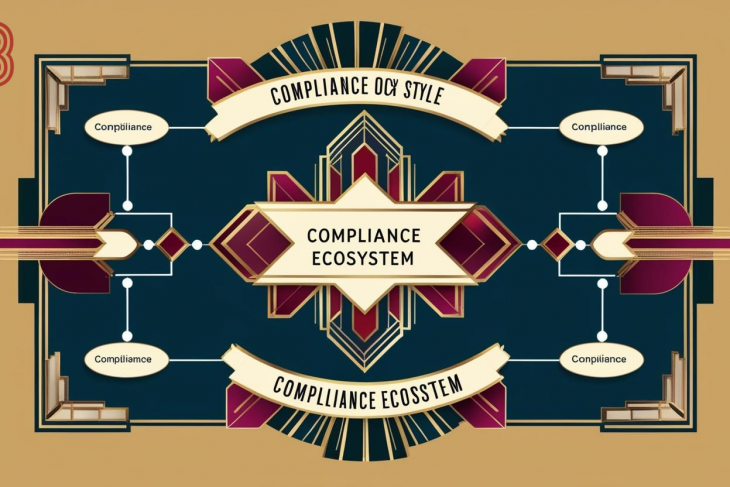
Introduction
In the domain of financial crime compliance (FCC), risk management is a core function aimed at identifying, assessing, mitigating, and monitoring risks associated with financial crime, such as money laundering, terrorist financing, fraud, and sanctions violations. Despite the implementation of robust control measures, certain risks persist—these are known as residual risks. Understanding, measuring, and managing residual risk is critical for financial institutions (FIs) to maintain regulatory compliance and minimize exposure to financial crime.
This paper explores the concept of residual risk in financial crime compliance, its significance, measurement methodologies, regulatory expectations, challenges, and strategies for effective management.
1. Understanding Residual Risk in Financial Crime Compliance
1.1 Definition of Residual Risk
Residual risk refers to the level of risk that remains after an institution has implemented controls to mitigate inherent risks. In financial crime compliance, residual risk exists even after applying anti-money laundering (AML) controls, customer due diligence (CDD) measures, transaction monitoring, and other compliance efforts.
Formula for Residual Risk:
Residual Risk=Inherent Risk−Control Effectiveness
Where:
Inherent Risk is the raw or natural risk posed by a business activity before any controls are applied.
Control Effectiveness represents the extent to which existing controls mitigate the inherent risk.
For example, a bank dealing with high-risk customers (e.g., politically exposed persons or crypto businesses) will always have some level of residual risk even after implementing enhanced due diligence (EDD) and transaction monitoring.
1.2 Importance of Residual Risk Assessment
Residual risk assessment is vital for:
Regulatory Compliance: Regulators such as the Financial Action Task Force (FATF), Financial Crimes Enforcement Network (FinCEN), the European Banking Authority (EBA), and the UK’s Financial Conduct Authority (FCA) require financial institutions to conduct risk assessments, including evaluating residual risk.
Strategic Decision-Making: Helps institutions allocate resources efficiently and focus on areas with the highest exposure.
Risk-Based Approach (RBA): Supports proportional application of AML measures based on the actual level of risk.
Audits and Regulatory Examinations: Demonstrates compliance efforts and justifies control effectiveness to auditors and regulators.
2. Measuring Residual Risk in Financial Crime Compliance
2.1 Residual Risk Assessment Methodologies
Residual risk can be assessed using various qualitative and quantitative approaches:
A. Qualitative Assessment
Risk Matrices: A commonly used tool where residual risk is rated as Low, Medium, High, or Critical based on predefined criteria.
Expert Judgment: Subject matter experts assess risk based on experience, regulatory requirements, and industry best practices.
Scenario Analysis: Evaluation of hypothetical financial crime scenarios to understand potential risks.
B. Quantitative Assessment
Risk Scoring Models: Assign numerical values to different risk factors and control effectiveness to derive a residual risk score.
Statistical Analysis: Uses historical data to predict the likelihood and impact of financial crime events.
Machine Learning & AI: Advanced algorithms assess transactional and behavioral patterns to quantify residual risks dynamically.
2.2 Residual Risk Rating Criteria
Residual risk ratings often consider the following:
Likelihood of Financial Crime: The probability of occurrence despite existing controls.
Impact on the Institution: Financial, reputational, operational, and legal consequences.
Control Strength: Effectiveness of AML controls, policies, and procedures.
For instance, a financial institution with moderate inherent risk but strong controls may have low residual risk, whereas a bank with high inherent risk and weak controls may have high residual risk.
3. Regulatory Expectations on Residual Risk
3.1 International Regulatory Standards
Regulators worldwide emphasize risk-based financial crime compliance and expect institutions to assess and manage residual risks:
A. Financial Action Task Force (FATF)
FATF’s Recommendation 1 mandates a Risk-Based Approach (RBA), requiring financial institutions to assess residual risks and implement proportionate controls.
FATF mutual evaluations assess how well jurisdictions and institutions manage residual risks.
B. Basel Committee on Banking Supervision (BCBS)
The BCBS Compliance and Risk Management Principles emphasize the need for ongoing risk assessments, including residual risk evaluation.
C. Financial Conduct Authority (FCA) – UK
The FCA’s Financial Crime Guide stresses that firms must demonstrate a clear understanding of their residual risks and take steps to mitigate them effectively.
D. US Financial Crimes Enforcement Network (FinCEN)
FinCEN’s AML regulations require financial institutions to assess residual risks as part of their AML risk assessment and compliance program.
3.2 Regulatory Examinations & Residual Risk Management
During regulatory audits, financial institutions must provide:
A well-documented risk assessment methodology that includes residual risk evaluation.
Evidence of ongoing monitoring and adjustments to risk assessments.
Justification of risk appetite and how residual risk aligns with business strategy.
Failure to manage residual risk effectively can lead to enforcement actions, fines, or reputational damage.
4. Challenges in Residual Risk Management
4.1 Subjectivity in Risk Assessment
Residual risk evaluation often involves subjective judgment, leading to inconsistencies in risk ratings across institutions.
4.2 Data Limitations
Poor data quality and incomplete transaction records hinder accurate residual risk assessment.
Lack of integration between customer risk profiles and transaction monitoring systems.
4.3 Dynamic Regulatory Landscape
Frequent changes in AML regulations and sanctions lists make residual risk management a moving target.
4.4 Emerging Financial Crime Threats
Cryptocurrency & Decentralized Finance (DeFi): New financial crime typologies introduce unforeseen residual risks.
Trade-Based Money Laundering (TBML): Hard to detect despite robust controls.
4.5 Resource Constraints
Many institutions lack the technology, skilled personnel, and budget needed for advanced residual risk analysis.
5. Best Practices for Managing Residual Risk in Financial Crime Compliance
5.1 Implement a Dynamic Risk-Based Approach
Continuously update risk assessments based on emerging threats and regulatory changes.
Use real-time risk scoring models to detect shifts in residual risk exposure.
5.2 Enhance Control Effectiveness
Strengthen customer due diligence (CDD), enhanced due diligence (EDD), and ongoing monitoring.
Improve transaction monitoring systems (TMS) using AI-driven analytics.
5.3 Leverage Technology & Data Analytics
Use machine learning & AI for dynamic residual risk assessment.
Employ big data analytics to detect complex financial crime patterns.
5.4 Conduct Regular Independent Audits
Engage third-party auditors to assess residual risk methodologies.
Implement feedback from audits to refine control measures.
5.5 Regulatory Engagement & Training
Maintain proactive communication with regulators regarding residual risk management practices.
Provide ongoing training for compliance teams on evolving financial crime risks.
6. Case Studies on Residual Risk Management
6.1 Case Study: HSBC – AML Compliance Failures
In 2012, HSBC was fined $1.9 billion for failing to mitigate residual risks in AML compliance, allowing drug cartels to launder money through its US and Mexico operations.
Lessons Learned:
Inadequate transaction monitoring led to high residual risks.
Weak EDD processes allowed high-risk customers to exploit the system.
6.2 Case Study: Danske Bank – Estonia Money Laundering Scandal
Danske Bank’s Estonian branch processed €200 billion in suspicious transactions due to weak residual risk management.
Key Failures:
Over-reliance on initial risk assessments without continuous monitoring.
Lack of automated transaction monitoring tools.
7. Summary
Residual risk is an inevitable component of financial crime compliance. While institutions strive to implement strong controls, complete risk elimination is unrealistic. The key to effective residual risk management lies in continuous monitoring, robust data analytics, dynamic risk assessments, regulatory engagement, and the strategic use of technology.
With regulators increasingly focusing on risk-based compliance, institutions must prioritize residual risk evaluation to prevent financial crime and avoid regulatory penalties.
By fostering a culture of compliance, innovation, and risk awareness, financial institutions can achieve sustainable financial crime risk management while maintaining operational resilience.




















